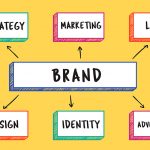The following table provides some of the information you might need for your market research
| Need | Nature of Information | Applicable methods |
| Crisis management | Feelings, ratings, attitudes | Survey, focus group |
| Satisfaction | Ratings | Face-to-face/survey/internet/mail |
| A/B testing | Preferences, attitudes | Focus groups, surveys |
| Usability testing | Attitudes, likelihood | |
| Attitude/ use | Attitude, awareness, frequency | Focus group, surveys, face-to-face |
| M & E | Ratings, attitudes | Survey, face-to-face/internet/mail |
| Training Needs | Needs, ratings, preferences | Survey, face-to-face/internet/mail |
| Segmentation | Needs, behavioural, psychographic, firmographic, demographic | Cluster analysis, surveys |
[/rt_accordion_style_item][rt_accordion_style_item accordion_item_title=”3. Is there a difference between quantitative and qualitative research?”][/rt_accordion_style_item][rt_accordion_style_item accordion_item_title=”4. Is there a better data collection method?”]
| Method | Advantages | Disadvantages |
| Face-to-face Interviews | Better explanations, high accuracy, better for product placement, depth | Costly, organizational complex, time, control difficulty |
| Telephone Interviews | Low cost, high speed | No visuals, no contact |
| Self-completion Interviews | Audience motivation, high response rate | |
| Online Surveys | Improved accuracy, saves , time |
[/rt_accordion_style_item][rt_accordion_style_item accordion_item_title=”5. What is CATI?”]The use of telephone to collect data through telephone interviews[/rt_accordion_style_item][rt_accordion_style_item accordion_item_title=”6. What is in-depth interview?”]It is unstructured interviews that allows interviewees the freedom of exploring additional information and changes in direction of interview. It is a qualitative data collection approach that allows collection of descriptive and rich data around information such as perceptions, attitudes, behaviours. You can adopt this as a standalone or integrate with other method.[/rt_accordion_style_item][rt_accordion_style_item accordion_item_title=”7. What is a focus group?”]Collection of data by interacting with group members. Members are carefully selected to participate in discussion of issues. Used to answer questions on how, what, and why to provide processes, attitude, and behaviour.[/rt_accordion_style_item][rt_accordion_style_item accordion_item_title=”8. What is semi-structured survey”]Collection of both quantitative and qualitative data. Useful in either industrial or B2B market research. Allows comparison of responses, flexible, ask follow up questions, allow respondents opportunity to expound on a topic.[/rt_accordion_style_item][rt_accordion_style_item accordion_item_title=”9. What is appropriate response rate?”]The proportion on respondents that get invitation to participate in a survey and accept to go ahead with the survey. Varies depending on market research.[/rt_accordion_style_item][rt_accordion_style_item accordion_item_title=”10. How can I use attitudinal segmentation?”]Grouping of customers based on attitude – feelings, thoughts. Helps design messages that suit the target market. Used when a client wants to create products, services, and communication to appeal to specific audience. Useful for segmentation of customers.[/rt_accordion_style_item][/rt_accordion_style]



